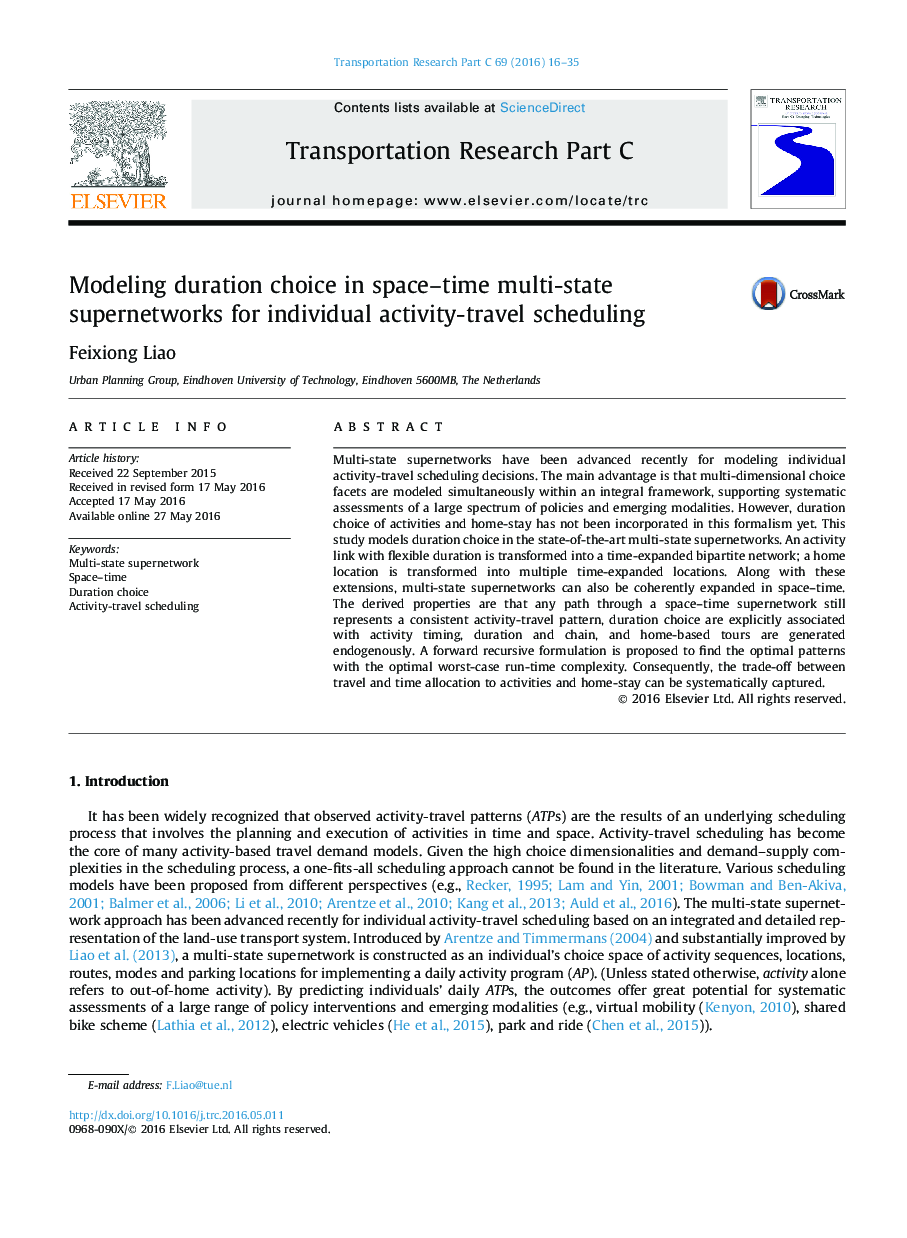| کد مقاله | کد نشریه | سال انتشار | مقاله انگلیسی | نسخه تمام متن |
|---|---|---|---|---|
| 524717 | 868851 | 2016 | 20 صفحه PDF | دانلود رایگان |
• Out-of-home activity duration choice is represented in time-expanded links.
• Home-stay duration choice is represented at time-expanded nodes.
• Home-based tours are generated endogenously.
• Trade-off of time allocation is systematically modeled.
• An algorithm with a reduced order of time complexity is proposed.
Multi-state supernetworks have been advanced recently for modeling individual activity-travel scheduling decisions. The main advantage is that multi-dimensional choice facets are modeled simultaneously within an integral framework, supporting systematic assessments of a large spectrum of policies and emerging modalities. However, duration choice of activities and home-stay has not been incorporated in this formalism yet. This study models duration choice in the state-of-the-art multi-state supernetworks. An activity link with flexible duration is transformed into a time-expanded bipartite network; a home location is transformed into multiple time-expanded locations. Along with these extensions, multi-state supernetworks can also be coherently expanded in space–time. The derived properties are that any path through a space–time supernetwork still represents a consistent activity-travel pattern, duration choice are explicitly associated with activity timing, duration and chain, and home-based tours are generated endogenously. A forward recursive formulation is proposed to find the optimal patterns with the optimal worst-case run-time complexity. Consequently, the trade-off between travel and time allocation to activities and home-stay can be systematically captured.
Journal: Transportation Research Part C: Emerging Technologies - Volume 69, August 2016, Pages 16–35
